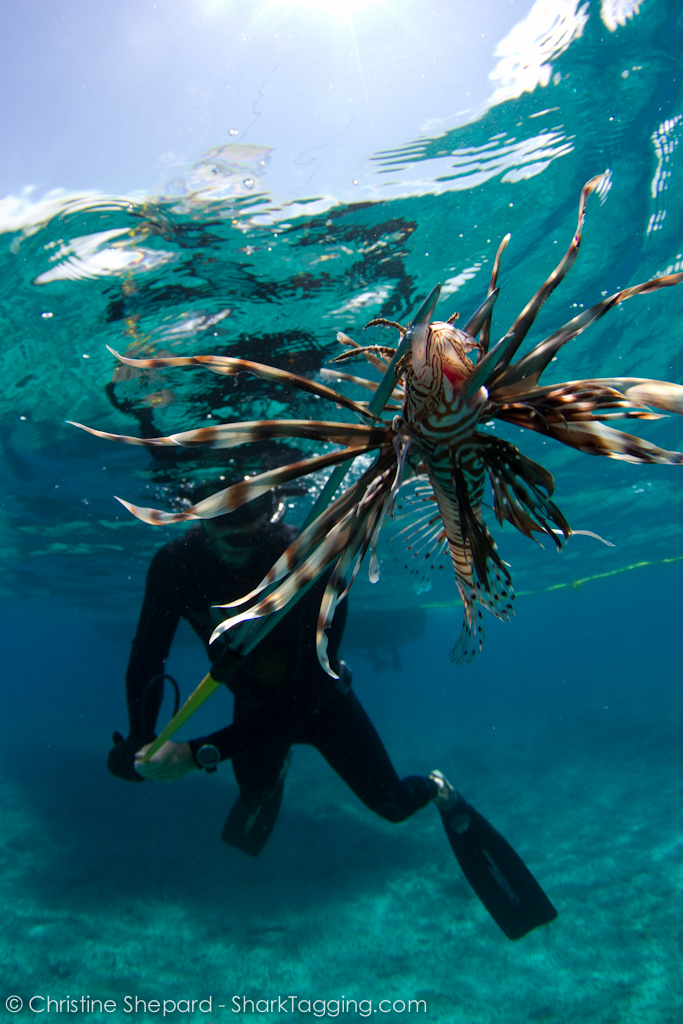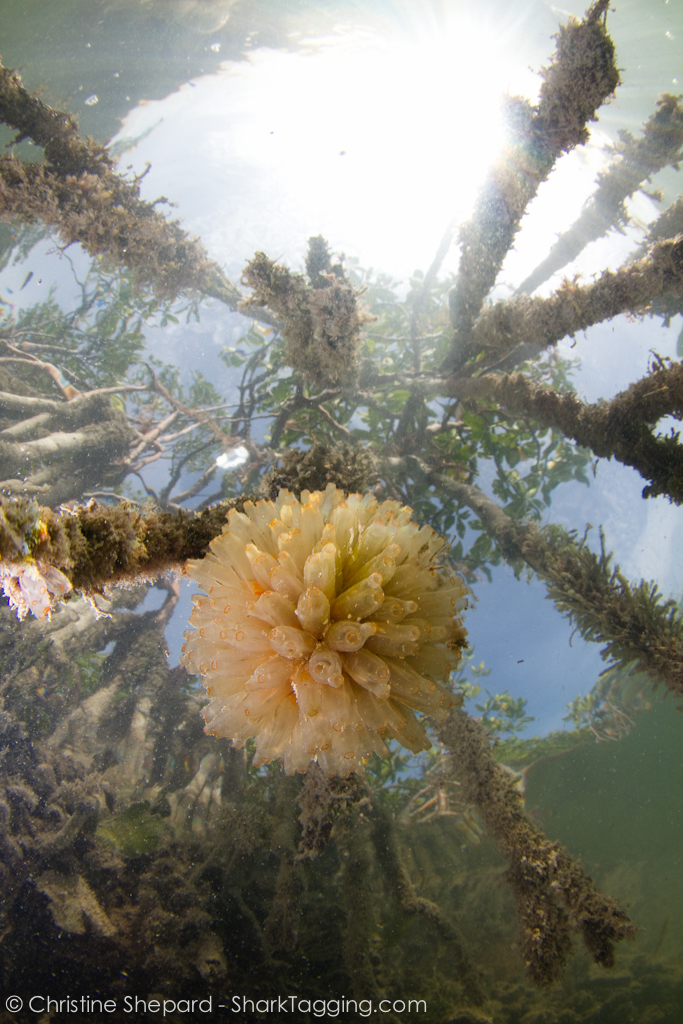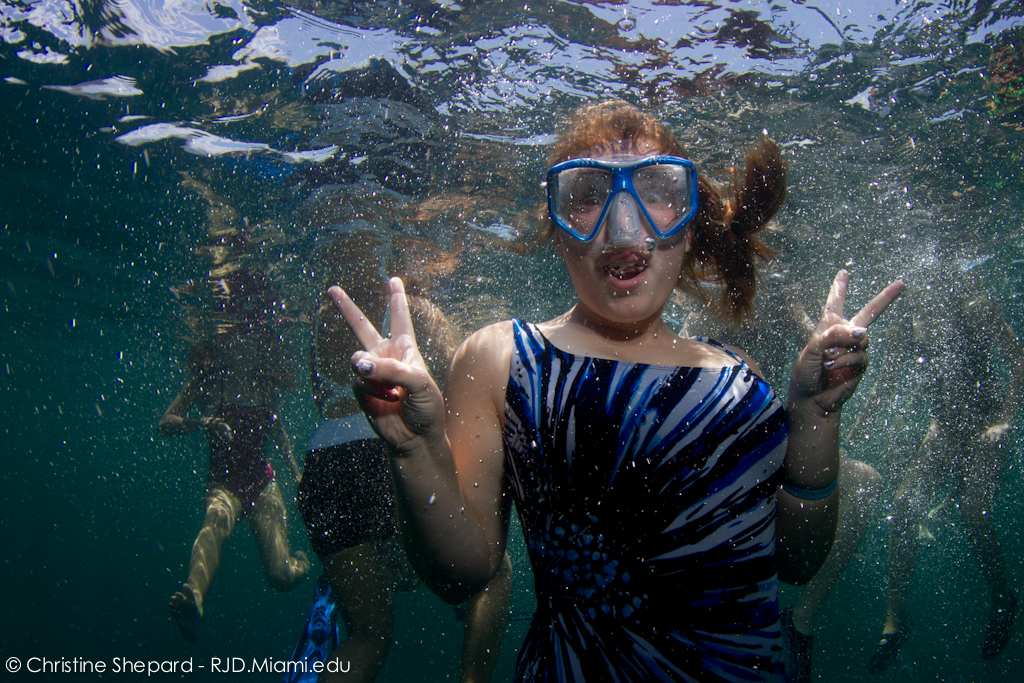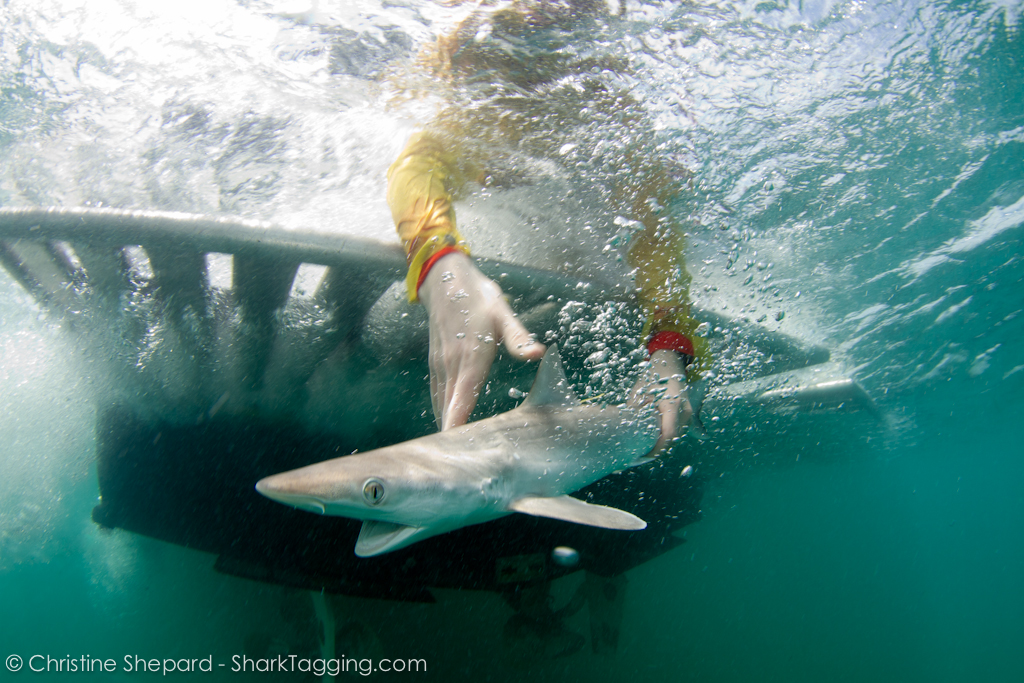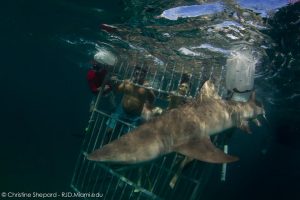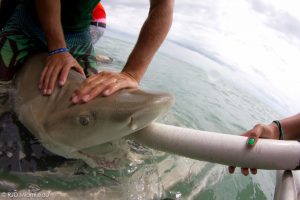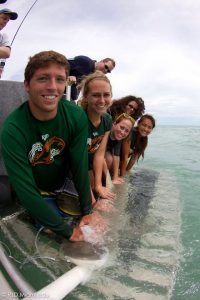Shark tagging with Aimia
/0 Comments/in SRC blog /by aanstett1/9/13
By Daniela Escontrela, RJD Intern
It was the first trip of the semester and everything couldn’t have been more perfect. Not only did we not have to make the tedious drive all the way down to Islamorada, but the trip departed at 1pm. I couldn’t be more excited as my last trip had been about a month ago and I was beginning to get anxious about not being out on the water.
We were departing from the Miami Seaquarium dock and had some last minute preparations to make. After getting some gear from the lab at RSMAS, putting the platform on and doing a checklist to make sure we had everything we needed, we were ready for our group to arrive.
Should Florida allow Goliath grouper to be culled?
/2 Comments/in SRC blog /by aanstettby Becca Shelton, RJD Intern
Goliath grouper, Epinephelus itajara, were documented as commercially extinct in the late 1980’s and have had protection from fishing in USA waters since 1990. They are the largest grouper in the Atlantic Ocean, growing up to the record size of 2.5 m in total length and 450 kg, making them popular to fish. Like many other top-predators, Goliath grouper are very susceptible to being overfished because they are long-lived, slow growing, late to sexually maturity, need spawning aggregations to reproduce and are also very habitat/site specific. While they are still listed as critically endangered on the IUCN Red List throughout its range, tropical and subtropical Atlantic, recent studies suggest that juvenile stocks are recovering and adults are returning to spawning grounds in Florida. This is extremely exciting news to scientists and divers but local fisherman are calling for a cull (selective fishing) of Goliath grouper in Florida to protect commercial/recreational stocks of spiny lobster (Panulirus argus), grey snapper (Lutjanus griseus) and other species of grouper (Serranidae). In the paper, “Should the Critically Endangered Goliath grouper Epinephelus itajara be culled in Florida,” Dr. Sarah Frias-Torres looks at both the pros and cons to this argument.
How will global warming affect different marine species?
/0 Comments/in SRC blog /by aanstettby Jennah Caster, RJD Intern
Climate change is a phenomenon that is affecting many marine species. However, not all species are influenced in the same ways, or to equal degrees. Average sea surface temperatures (SST) have shifted in some marine regions faster than the global average (Trenberth et al. 2007). Extreme localized changes have lead to large mortality events, altered interactions, and shifts in habitat for several marine species over recent decades (Perry et al. 2005; Dulvy et al. 2008). Understanding these repercussions are paramount to making more accurate predictions of the future effects of climate change on species, and overall ecosystem function.
Ecosystem function can be greatly affected by changes in species interactions. Many species are able to co-exist in the same habitat. Yet, when the environment changes, interactions among species are altered by their ability to adapt to new conditions (Tylianakis et al. 2008). Some species have certain adaptations that allow them to tolerate warming events better than others. For mobile organisms, climate change can lead to forced competition among similar species over habitat with preferable conditions (Tylianakis et al. 2008). This can result in warm-adapted species winning at the expense of cold-adapted species (Milazzo et al. 2012).
Photo (video) of the week: Swimming with a tiger shark
/0 Comments/in SRC blog /by aanstettThis week’s “Photo of the Week” is a video taken by RJD Ph.D. student Austin Gallagher. Last weekend, after the RJD team worked up and released a tiger shark, Austin swam after it with his GoPro camera. This video is the result. Enjoy!
Swimming with a Tiger from Triakis Films on Vimeo.
Shark Tagging with Experience Aviation
/0 Comments/in Shark Research, SRC blog /by aanstettSunday, September 16th, 2012
by Laurel Zaima, RJD Intern
I woke up bright and early Sunday morning, and I was ecstatic to get out on the boat to conduct some “sharky” research! Unfortunately, it was a dark and blustery day in Coral Gables. I was afraid that my first trip of the semester was going to be cancelled. I began to take the necessary precautions by preparing myself for some bad news, but Captain Curt didn’t call off the trip. My fear was lifted and we were off to Islamorada! James, our fearless driver, led Kyra, Jon, and I safely through the thunderstorm and right on time. Captain Curt instructed us to shorten our normal lines because we were going to a shallow site, about 15 feet (4.572 meters) of water. Captain Curt anticipated the water to be a little choppy that day due to the dreary weather. Luckily, the weather actually cleared up, and it ended up being beautiful and sunny!
We were all very grateful for the weather cooperation because we wanted everyone to have an educational and hands on experience while conducting research. On this trip, we went out with an enthusiastic group called Experience Aviation and a couple of students from the University of Miami’s Abess Center for Ecosystem Science and Policy. Everyone was eager to get involved. Thanks to the assistance of our large group on board, we were able to swiftly and successfully deploy our first 10 drumlines! The initial drumlines that we pulled up were, unfortunately, shark-less, but we remained hopeful because some of the lines were also bait-less.
I was feeling lucky that day, so I cannot say that my “shark summoning talent” was the sole reason for pulling in the first shark. She was a beautiful, female Lemon Shark. She was small shark, only totaling a length of 170 cm (5.577 feet). After we conducted all of our necessary research, she was safely released back into the water in great condition. After our first catch of the day, the boat had a positive vibe and everyone was ready to catch another!
One of the members of the Experience Aviation group volunteered to pull up a drumline, and he knew instantaneously that there was a strong and large shark on the line. This mysterious shark was running the line aggressively, so I grabbed the line to help. Another RJD intern held onto the volunteer to make sure he did not slip into the water. All of the sudden, the line went slack. I assumed the shark released himself from the line, but in actuality, he had broken the line off at the base of the weight! I guess this shark friend of ours will remain a mystery of the sea!
Our next catch was another female Lemon Shark. She was slightly larger than the first shark; she had a total length of 193 cm (6.33 feet). Immediately after we released her back into the water, the next drumline caught another female Lemon Shark! She also was a little bigger than the previous; her total length was 198 cm (6.50 feet).
After those two exciting encounters with Lemon Sharks, we started pulling up “shark-less” drumlines. We thought that our day was over with a total count of three female Lemon Sharks, but much to our surprise, we caught another female Lemon Shark on the second to last drumline! There seemed to be a trend of increasing length. She followed this trend with a total length of 229 cm (7.51 feet). Our day of shark tagging was clearly dominated by the female Lemon Shark!
We ended such a great day out on the water with some delicious cookies, “Curt-a-Sea” of Captain Curt! I can’t think of a better way to spend a Sunday than shark tagging in The Keys with my fellow RJD team and my new friends from Experience Aviation and the University of Miami Abess .
Privacy Statement and Legal Notices
Copyright © 2018, University of Miami
All rights reserved.
4600 Rickenbacker Causeway
Miami, Fl 33149-1098
+1 305 421 4000

